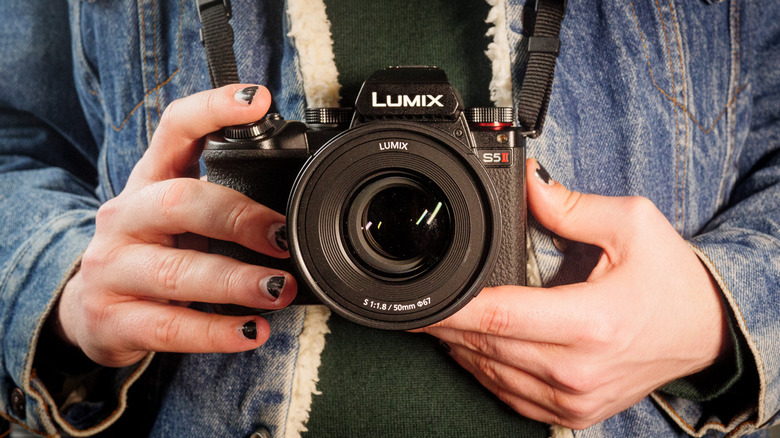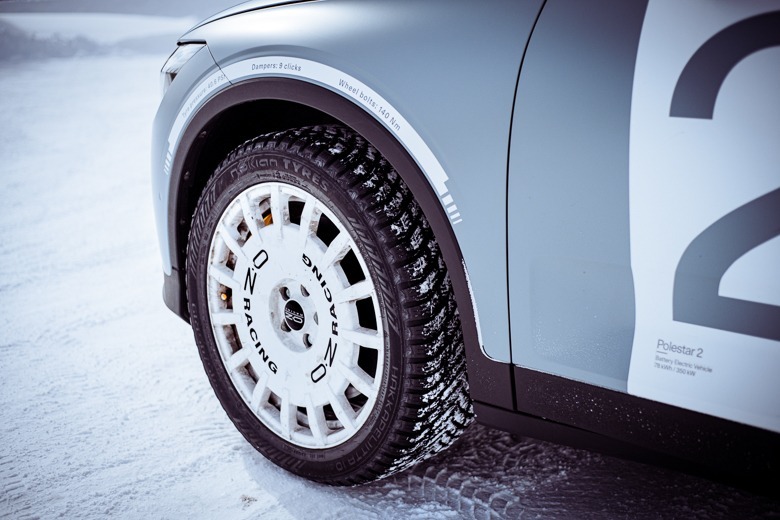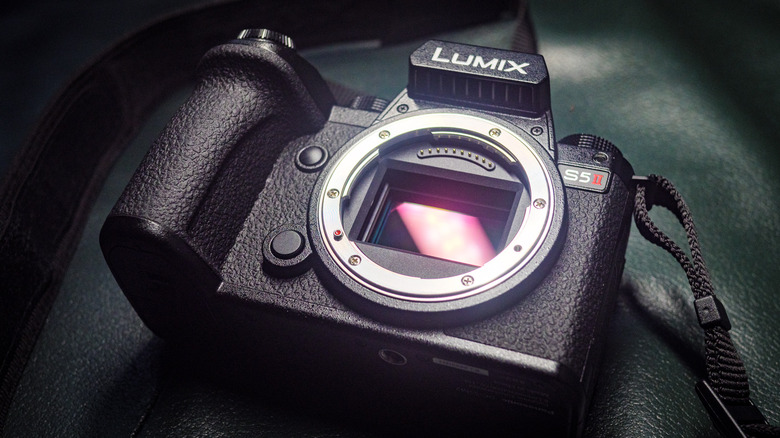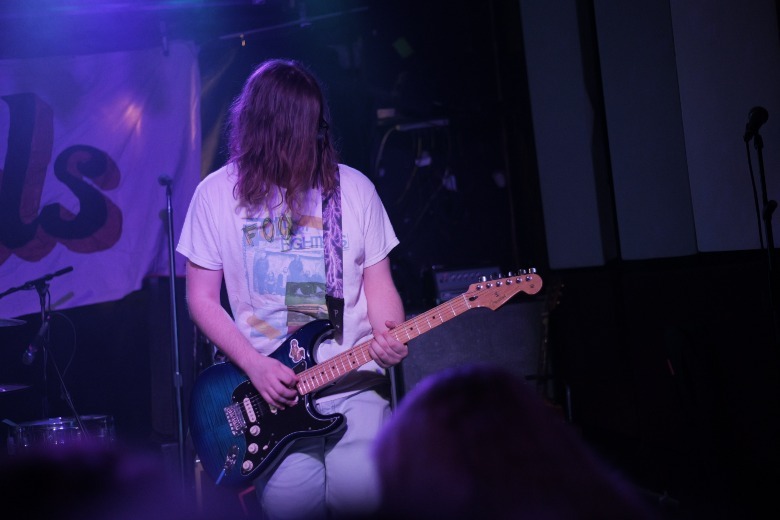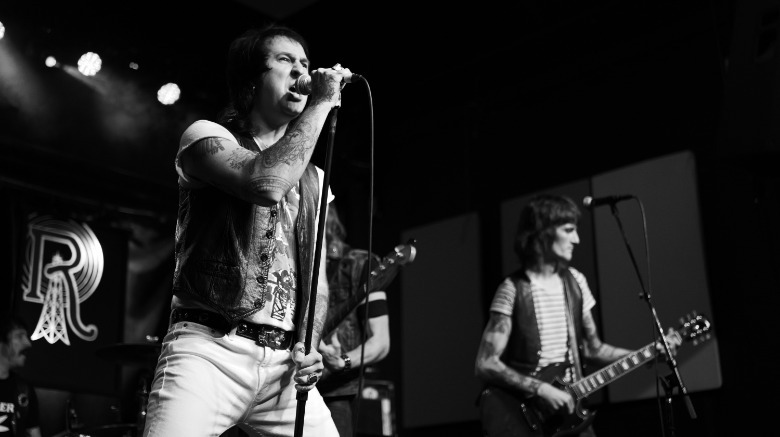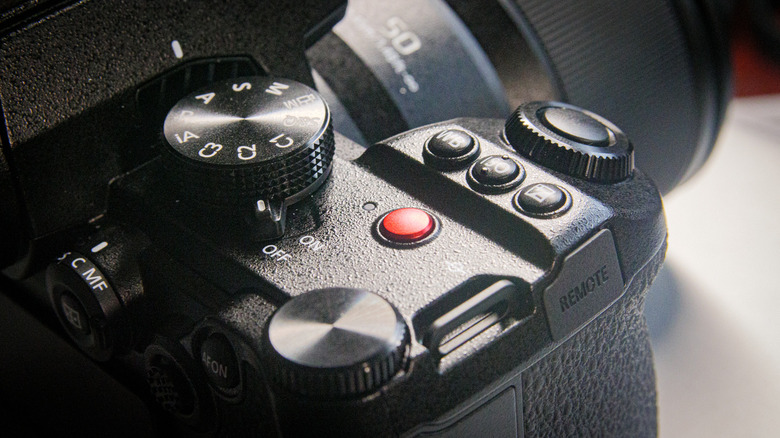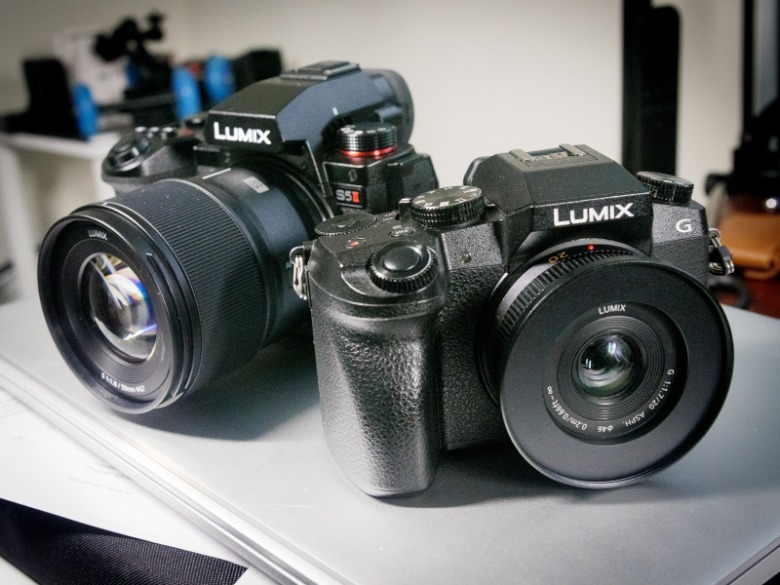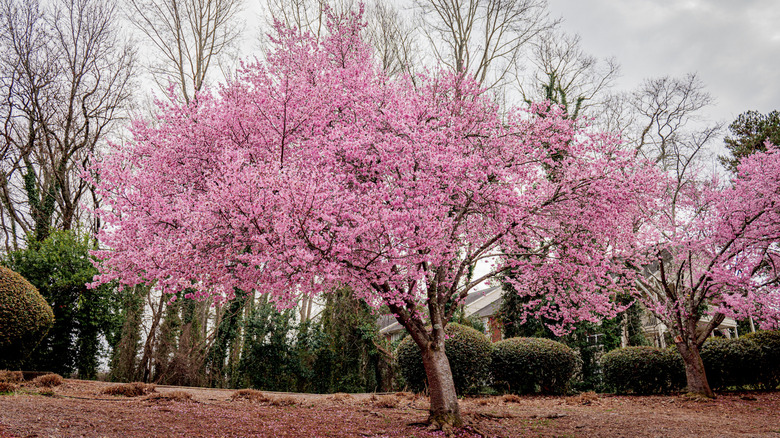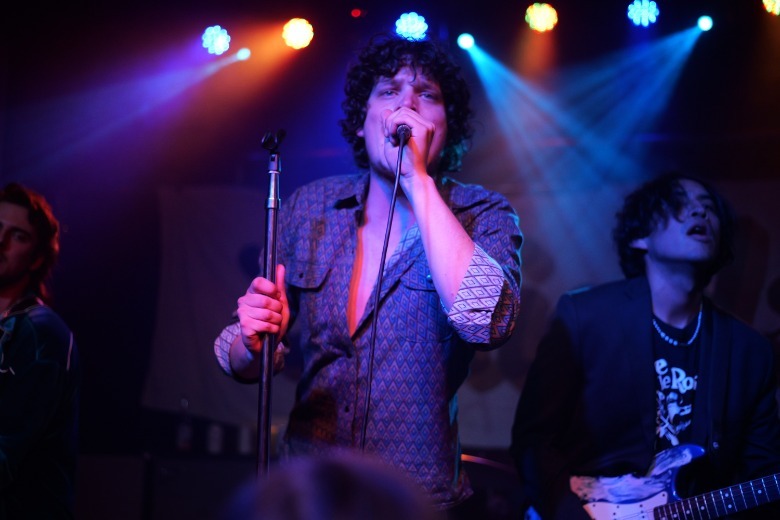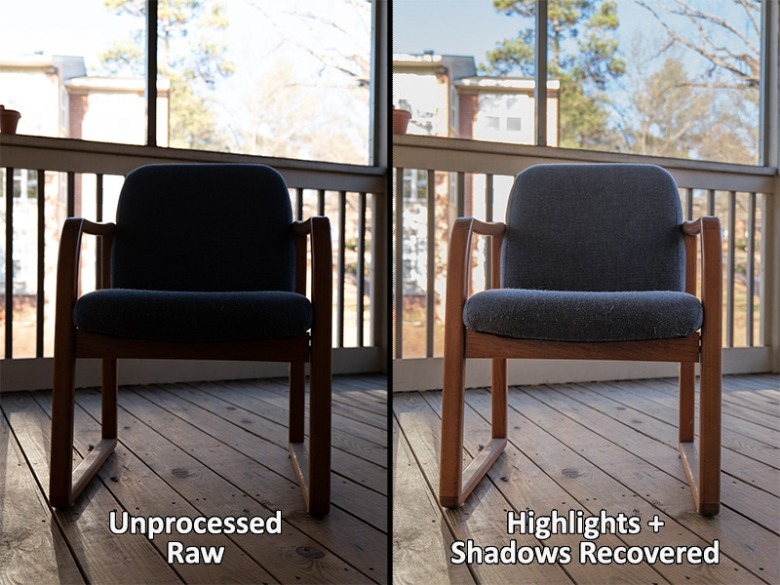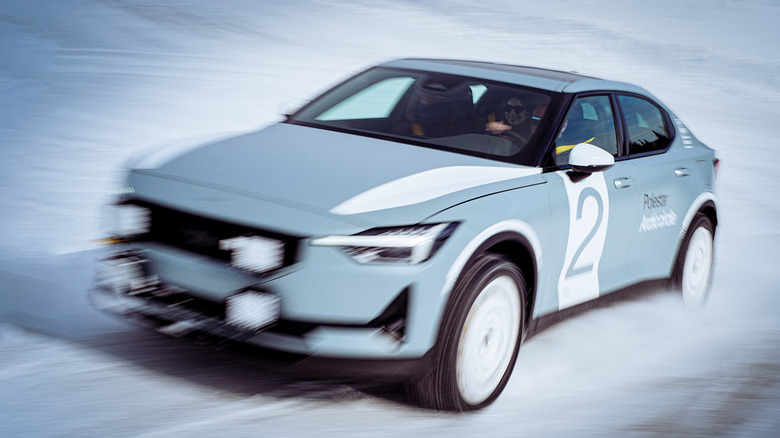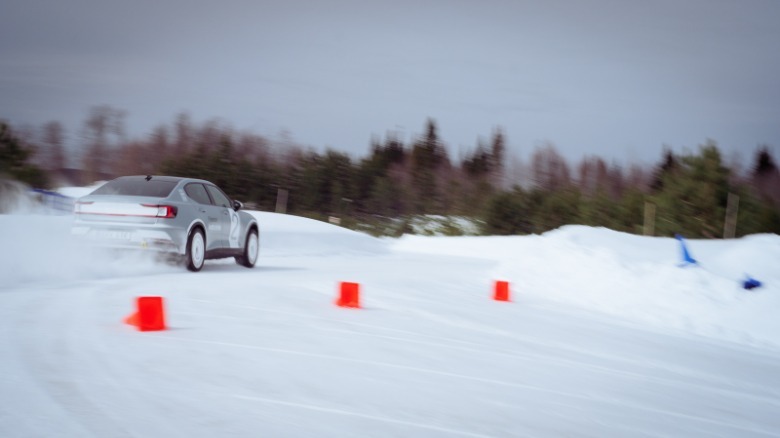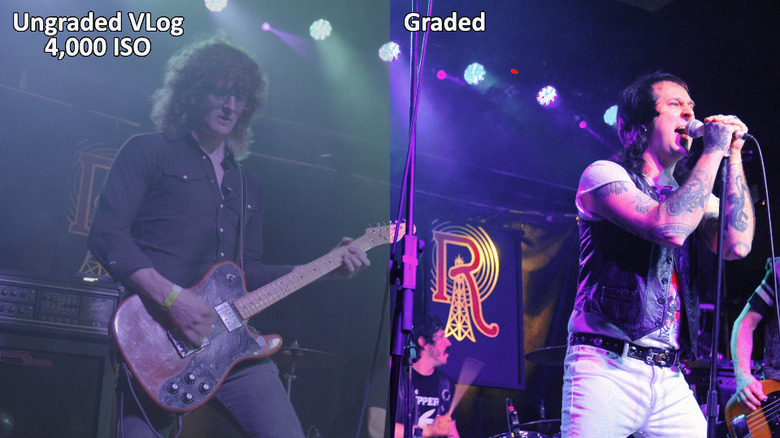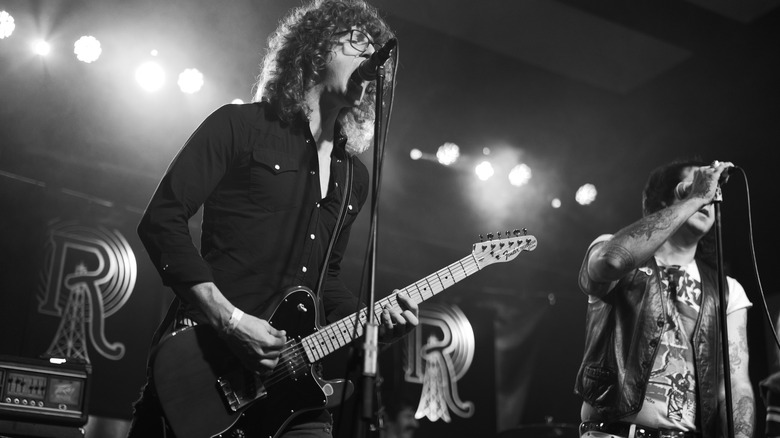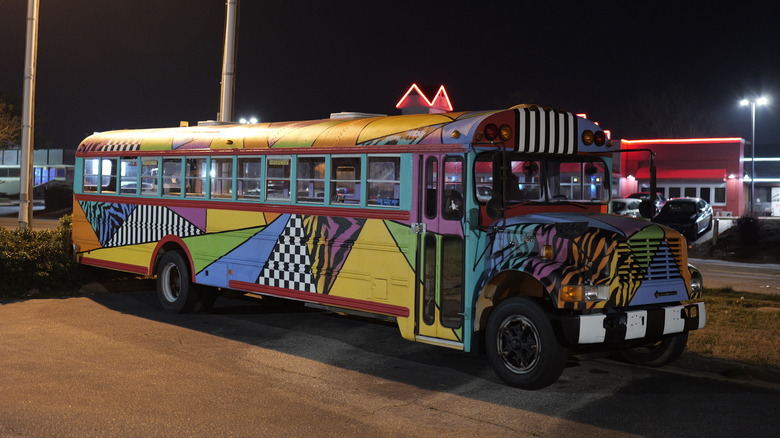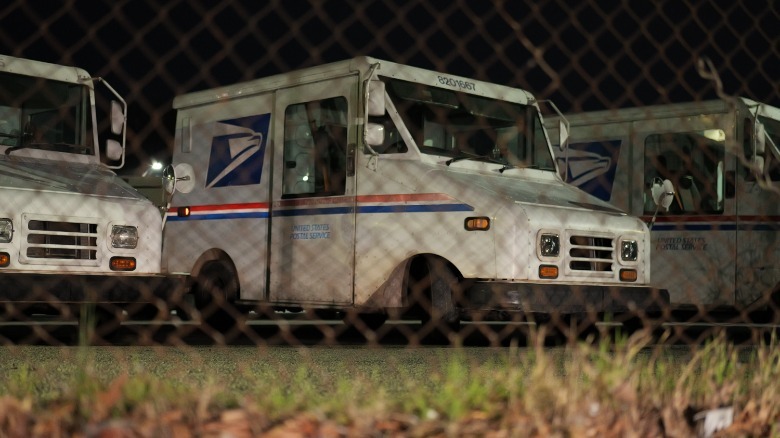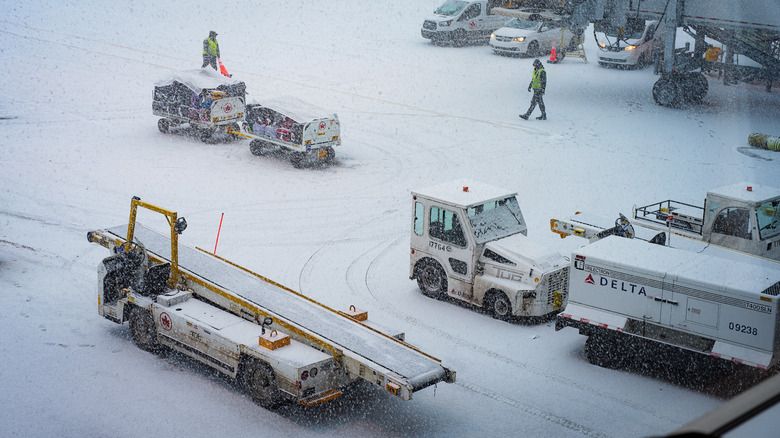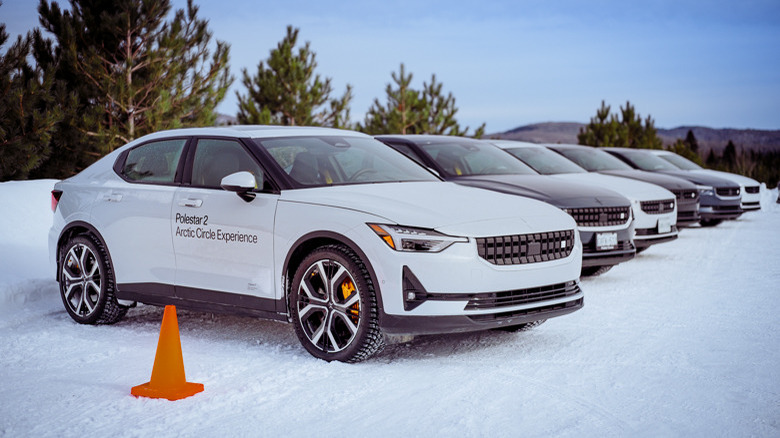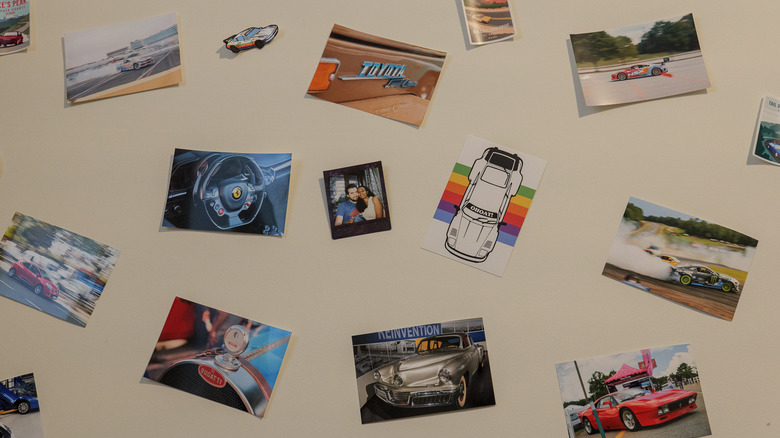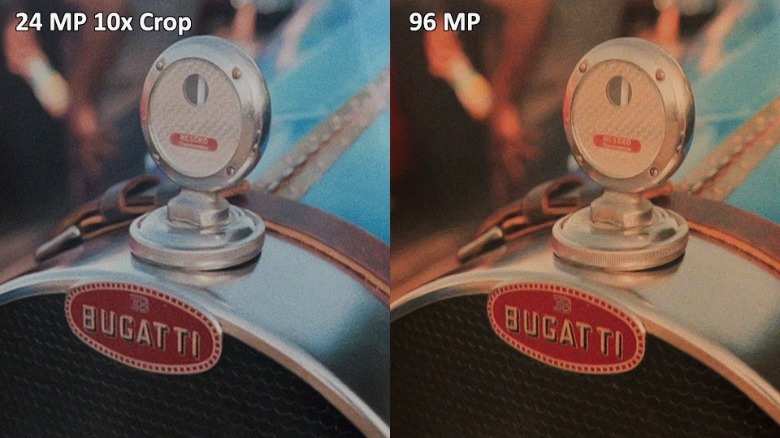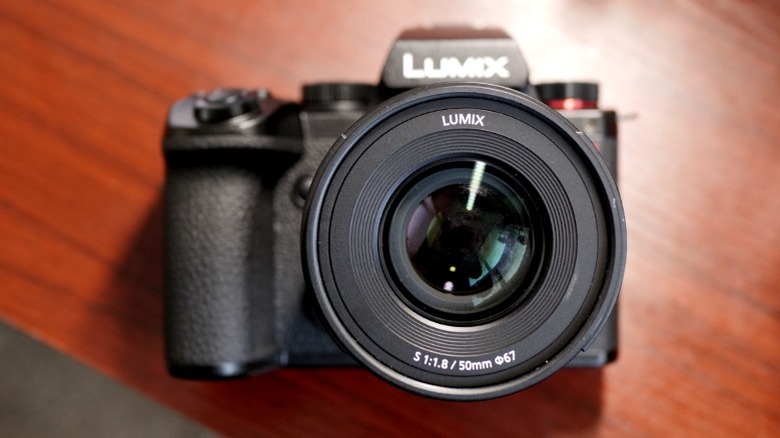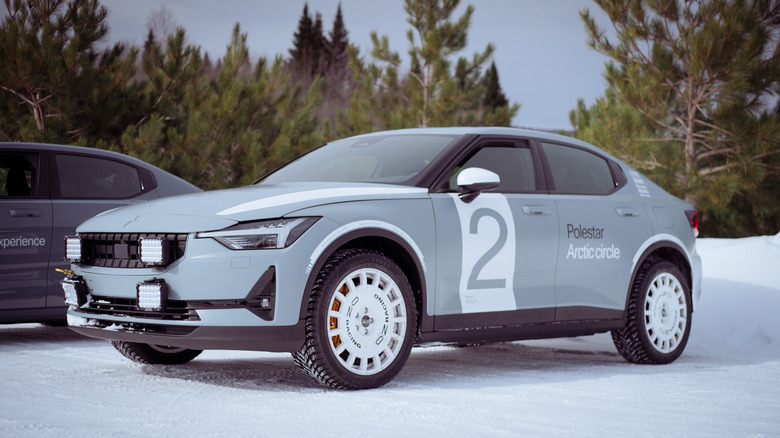Lumix S5 II Review: Budget Full-Frame Powerhouse Takes On Sony's Best
- Stellar Tracking Autofocus
- Sharp Low Light Images
- 6K Video Recording
- Flimsy Rear Screen
- Disorganized Menu System
- Missing Some Pro Video Features
The Lumix S5-II has received the greatest fanfare of just about any affordable mirrorless camera release in recent memory, and it's all down to one thing: the autofocus. Panasonic has finally ditched its clunky contrast-based focusing system in favor of a hybrid phase-detect method like those found in modern Canon and Sony bodies. I own two Micro Four Thirds Lumix cameras myself (a GH5 and a G7,) so I'm quite familiar with the shortcomings of the old system. This upgrade should make run-and-gun shots much easier to get in both photo and video modes.
The sensor is also a step up from my MFT bodies. The S5 uses a 24-megapixel, 2:3 ratio sensor comparable in size to a 35mm film negative. This larger image format boasts incredible low-light performance compared to crop sensors or phone cameras and makes the body perfect for adapting vintage film lenses. Full-size image files output at a 6,000 x 4,000-pixel resolution. That's fairly standard these days, but more than enough to make large prints and to crop before delivery to HD screens. Images are saved to two SD slots, which are compatible with both UHS-I and UHS-II cards.
What's New in the S5-II
As you might expect, this body carries over many features from the original Lumix S5. The sensor is the same, with comparable signal and noise performance. The outer body design is essentially unchanged, with all the buttons where they were before. The same goes for the menu system.
What's obviously new is the hybrid autofocusing system. This addition works in conjunction with previously existing focus modes like single AF, continuous AF, subject tracking, and face tracking. Animal tracking is also available for those who like to photograph cats, dogs, and birds. Electronic viewfinder resolution has also seen a steady increase, from 2,360 pixels wide to 3,680 pixels wide.
In-body stabilization is carried over from the S5 and is at this point a Lumix staple. While power is on, the sensor floats on a gentle magnetic field and subtly tilts to counteract user hand movements, resulting in sharper images. This stabilization system has been upgraded to provide 5 stops of performance. Theoretically, a shot taken at 1/3 of a second shutter speed should be about as sharp as one taken at 1/100 in a non-stabilized body. This effect is even greater if combined with stabilized lenses.
Video features are also beefed up significantly, with resolutions up to 5.9K at a 16:9 ratio and 6K using a 2:3 open gate. 10-bit color data is supported at every resolution and framerate. The new whisper-quiet cooling fan also ensures unlimited recording times are possible without overheating.
How Good is the Autofocus?
In short, it's really good, and a significant step up from Panasonic's previous bodies. In older models, Lumix contrast focusing was always fast in stills mode, but it wasn't as dependable as other cameras. In less-than-ideal conditions, it gets lost and ruins shots that you don't have time to wait for. This is especially frustrating when doing things like face-tracking a subject in video mode. The system is constantly second-guessing itself and "pulsing" between far and near focus. This can make video footage look amateur. Sometimes it decides to grab an object way behind the face, ruining shots completely.
I'm pleased to say that the S5-II has eliminated almost all of those problems. In photo mode, you can fire off quick bursts of shots and get 90% of them in focus easily. In video mode, you can film yourself without constantly worrying that the focus is going to drift off. It makes using this camera a very stress-free experience.
There are a few hiccups, though. It's going to have trouble locking onto heavily backlit subjects. Frustratingly, the system tends not to 'see' subjects that are less than a few feet away, grabbing onto the background instead. This may be a deal-breaker for product photographers. With human and animal subjects in the frame, the system can also get lost trying to figure out which one you want. If you have some pigeons in the background of a shot, I'd suggest flipping it into human detection only.
Ergonomics
As stated, the weather-sealed body is basically the same as the prior S5. More than that, it looks like an upsized version of my personal G7. That's a camera from 2015, so the design is perhaps dated. Regardless, it's all very functional. The full-frame body is lightweight while still feeling quite sturdy. With zoom lenses mounted, the construction feels a bit too front-heavy for my wrists. That's something to consider for sports shooters. Buttons and dials are all nicely accessible. Not like the Sony A7 series, in which camera bodies feel too small for very average-sized hands. I do find myself wishing for a couple of extra custom buttons on the back of the S5-II.
Where Sony beats this camera is in the articulating screen design. The A7 screens are mounted on an aluminum cradle that feels sturdy. Meanwhile, Panasonic has the flimsy plastic hinge they've been using for ten years. It always feels like it will break after one bad drop. I have some anecdotal evidence of this since I bought my G7 with a busted screen.
I've never been a fan of Panasonic's menu organization, and this camera doesn't change that. It was probably fine back when there were relatively few custom options, but now it's overwrought with endless lists of text. You're always scrolling for a minute to find the thing that you want. I suggest putting in the time early to assign all the custom buttons and dials with the features you'll most use.
Exposure and Dynamic Range
Light most cameras, the S5-II uses a six-stop light meter to judge exposure in all of its automatic modes, but you'll want to familiarize yourself with the exposure compensation setting near the shutter button. To my eyes, I found that the Lumix was underexposing shots in a lot of environments, and the histogram data backed this up. Sometimes, I'd be pushing the exposure dial up a full stop to get to what I consider "neutral" exposure. Luckily, the S5-II includes a whole lot of other built-in exposure tools to judge your images by, including an on-screen histogram, vector scopes, and zebra patterns.
These are all useful tools to employ in both photos and videos. The zebra pattern in particular highlights only the parts of your preview image that are overexposed. If large portions of the image are showing zebra, then it's time to stop down, but a tiny bit of clipping in your background probably won't be noticeable. This gives you a quick visual reference to push your image just below the point of overexposure, thus retaining as much mid-tone and shadow data as possible.
When it comes to processing raw images, this sensor retains a dynamic range that is on par with some pro DSLRs. In my hands-on testing, I found that the raw files had a ton of shadow data to pull out of the image. Highlight retention was less impressive. Perhaps that's why the meter errs on the side of underexposure.
High Speed Shooting
When it comes to sports, concerts, or bird photography, the S5-II is capable of firing many shots in quick succession. With continuous autofocus on, you can flip over to burst mode and hold the shutter button down for a very respectable seven frames per second. In single autofocus mode, it reaches an even fast nine frames per second. This is faster action than the average photographer will likely ever need, but if you absolutely must get the shot, you can also activate the electronic shutter mode to reach 30 frames per second. The stabilization also makes it very easy to pan and capture moving vehicles at slow shutter speeds.
At max speed, the camera is still perfectly capable of writing raw images and JPEGs at the same time. 30 FPS is a lot of data to churn through, and I found that my UHS-I SD cards were a speed bottleneck with the electronic shutter burst. Invest in some UHS-II cards if you really want to max out the speed. With the faster cards, the S5-II is capable of churning out up to 200 frames in a row before filling the buffer and slowing down.
While photographing a noise-sensitive environment, you can also put the camera into silent mode, which deactivates the mechanical shutter and scans the sensor electronically. However, I tend to stick to the traditional shutter. This camera's Electronic mode can lead to undesirable motion artifacts as the sensor scans its pixels line-by-line.
Video Features
Video is another category where the Lumix S5-II gets some significant upgrades over its predecessor. The S5 original was capable of recording 10-bit 4K footage to the memory card, much like my GH5. This new camera ups the ante with the options for up to 6K video, in a variety of aspect ratios. High-speed options are mostly the same, with up to 180 frames per second at 1080P. You can also switch video mode over to .mp4 compression, which severely limits your resolution options but is ideal for straight delivery to social media.
Maybe 6K footage is a must for your filmmaking, but in my mind it feels like overkill. My PC hardware can hardly handle files that big, but the footage coming out of the S5-II looks great at any resolution, and it holds up to heavy contrast and color editing. The 2:3 open gate video mode also comes in handy if you want to pull both horizontal and vertical crops from your footage.
Overall, the S5-II packs in a ton of pro video features, but two are conspicuously missing that are available in my GH5. You can't record 4K60 footage and still get a full-frame readout. It forces you into a 1.5x crop, which granted, is still bigger than the full Micro Four Thirds sensor. It also has no shutter angle option, meaning you'll have to be diligent about setting your shutter speed correctly every single time you switch framerates. In theory, Panasonic should be able to fix that with an update.
More Video and Picture Profiles
Rolling shutter performance is poorer than the GH5 or GH6, leading to wobbly footage during fast panning. Also not included is the ability to record raw video. That will come as a $200 firmware upgrade later this year, allowing raw video output to an HDMI recorder. It's silly to charge extra money for that, but this is a feature that only serious pros will use, anyway. A video-centric version of the camera, S5-IIX, has also been announced for release in May 2023 for a $200 premium. The S5-IIX will add raw video, SSD compatibility, Apple ProRes recording, and built-in live-streaming features.
There are no gimmicks when it comes to picture profiles on this Lumix. You have standard color and a natural profile — which I consider "my standard." Natural pulls back contrast and saturation just a tiny bit to make things like skin tones more pleasant. Then there are vivid, portrait, and landscape modes. All essentially different flavors of the standard colors. Four monochrome profiles also offer varying levels of contrast.
Video-specific picture profiles include VLog, CineD, and Hybrid Log Gamma. VLog attempts to fit the full dynamic range into the compressed video, resulting in a "flat" image that must be converted to a standard color space before delivery. CineD is similar but less flat and easier to correct. HLG is intended for straight delivery to HDR sources, so I'd stay away from that unless you have an HDR screen to edit off of. The camera also handles noise data differently in these profiles, but more on that in a minute.
Low Light Performance
When combined with a fast lens, this S5-II is one of the greatest low-light cameras I have ever used. Sensor noise performance is very clean and uniform up to 6,400 ISO. In a pinch, I'd say it's even usable all the way up to 40,000 ISO. This is a camera that astrophotographers are bound to love. Combined with that great face-tracking autofocus, you can easily attain sharp images at something like a dimly lit concert, or perhaps a wedding reception.
This great performance is due partially to the S5-IIs dual gain sensor. In photo mode, maximum performance is achieved at both 100 ISO and 640 ISO. These are considered low and high native settings. I was mistaken about this during my time with the camera. I intentionally captured hundreds of photos at 400 and 4,000 ISO, believing those to be the native settings. They are not. In reality, 640 and 4,000 are considered the base settings only while filming in VLog.
For some reason, there's nothing inside the camera or included in the box that will actually tell you this. I found conflicting information online, and I had to contact a Panasonic rep to clear it up for sure. It gets even more complicated because CineD and HLG have their own native settings. Low and high for Hybrid Log Gamma is 400 and 2,500 ISO, while it's 200 and 1,250 for CineD. These are a bunch of little things to keep track of while trying to squeeze the most performance out of the camera.
The Cooling System
The new cooling system in the S5-II was likely installed to necessitate 6K recording, and it also allows for no runtime limits at any video setting. The camera should just keep crunching frames until the battery dies or the memory card fills up. I think the implementation of this fan is very clever: Hidden in the hump of the electronic viewfinder. I was also pleasantly surprised by how quiet the fan is. I couldn't tell that it was running until I put my ear right up to it. It's not likely to interfere with microphone recording.
By default, the fan is on auto setting and will kick on once the body reaches a certain temperature threshold. There's also a critical setting that will shut the fan off until the camera is near the threshold of overheating. I don't know why you would use that feature unless you have some super-sensitive mic picking up the tiny bit of fan noise. Lastly, there's a high setting that spins the fan up to max speed and moves air quickly. This setting is much more audible, though.
To give the cooling a quick test, I ran the 6K recording for about 30 minutes straight. The S5-II was noticeably warm, but not burning hot. It didn't show any warning screens or signs of overheating. Granted, results may vary while filming in Death Valley, but in an indoor setting, continuous recording should be no issue at all.
Battery Life and Viewfinder
The S5-II uses a rechargeable battery sourced from the original S5, which is also now used in the Micro Four Thirds GH6. This means that current GH6 users can pick up this camera and use one set of cells for both. Battery life has always been a sticking point for me when it comes to mirrorless cameras, but this S5-II has dampened my concerns. With intermittent stills shooting, I could easily get the battery to last for several hours at a time.
Throw 6K video recording into the mix, and that's going to cut down significantly on charge life. If you plan on using this camera primarily for video, definitely grab a couple of spare batteries. Out of the box, the only way to charge the S5-II is by using the USB-C port on its side. This takes multiple hours, and isn't convenient for pros, so consider investing in a secondary charger.
Using the electronic viewfinder can save you some battery life versus the rear LCD, but that's another thing I've never enjoyed about mirrorless cameras. EVFs usually start to hurt my eyes after just a couple of minutes of use. However, the high resolution and good contrast of this one do make it very easy to check focus, especially with manual lenses.
High Res Mode
In the center of the S5-II's drive modes, we have what's called "high res mode." This option takes four quick exposures and then interpolates them to make massive 96-megapixel image files. This feature has been available in a few Panasonic cameras, including the S5-I, but they've supposedly improved the algorithm in this new application.
High res mode really only works for still subjects, as motion within the frame will cause strange artifacts that ruin the image. The same goes for any motion in the camera, so a tripod will provide the best results. From the limited testing, I was able to do with high res mode, I think it's kind of a gimmick. Side by side, the 24-megapixel images looked nearly as sharp as the ones four times as large, which is a testament to how good this sensor is before processing. It's worth noting that sensor noise seems to be magnified slightly in this mode as well.
I'll concede that it may add more sharpness to faraway subjects like the horizon or stars, but a landscape photographer would generally stop down their lens to provide the same effect. I also noticed strange white-balancing issues that didn't exist in any other setting. High res mode may be useful for astrophotographers looking to deliver large prints of, say, the moon, but the rest of us will be more than satisfied with the standard resolution.
Lens Options
Out of the box, the S5-II comes with a 20-60mm kit lens with an f3.5 aperture on the wide end and f5.6 on the tight end. You'll want to ditch this lens quickly, as it severely limits low-light performance. I was able to get my hands on a 50mm f1.8 to go with the camera. Much more my speed. One thing I like about these Panasonic lenses is that they try to keep the barrel sizes consistent across the lineup. Most of these full-frame lenses have a 67mm barrel, which conveniently matches the photographic filter set I already own.
Like its predecessor, the S5-II uses the modern L mount, which has been around for a few years at this point. The mount system is shared with both Sigma and Leica full-frame cameras, so you have three companies to pull from when it comes to first-party options. This system already has lenses available at just about every usable focal length, from 14mm up to 600mm. Lumix lenses start at a few hundred dollars. There's also the Lumix Pro series with includes things like fast telephoto zooms and weather sealing. Leica-branded lenses have sturdy metal construction but are also heavy and expensive.
Pricing and Conclusion
The Lumix S5-II is available now for $1,997.99 from B&H. $300 more if you want the kit lens. I'd much rather recommend you dish out a little extra cash and get the Lumix 50mm f/1.8 prime lens for just under $350 (also from B&H). Cameras with comparable prices and specs are the Sony A7 III and Canon R6. However, neither of those others offers the ability to capture 6K video. The R6 also has slightly lower stills resolution. Overall, the S5-II is one of the best values you can get on the new camera market with a high amount of professional features built right into the body.
The big question is what this camera means for the rest of Panasonic's lineup. As of yet, the S5-II is the only Lumix camera with an upgraded autofocusing system. Those who purchased nearly as expensive (or more expensive) Lumix cameras like the S1 and the GH6 may be feeling like they got left high and dry. The company would be wise to bring this new system to its entire lineup as quickly as possible. Personally, I'll be hoping for a Micro Four Thirds camera that unites the pro video features of the GH5 and GH6 with the dependable face tracking of the S5-II.
